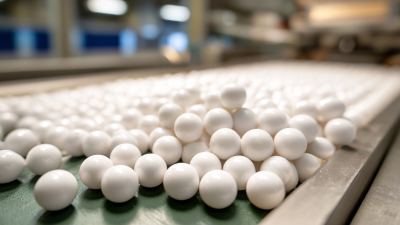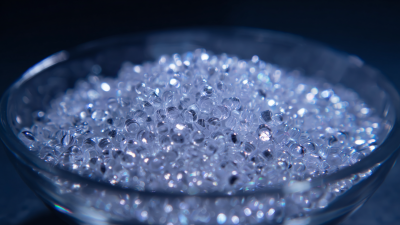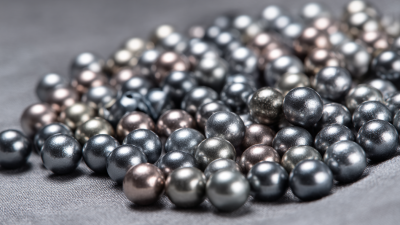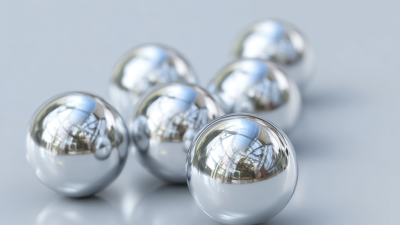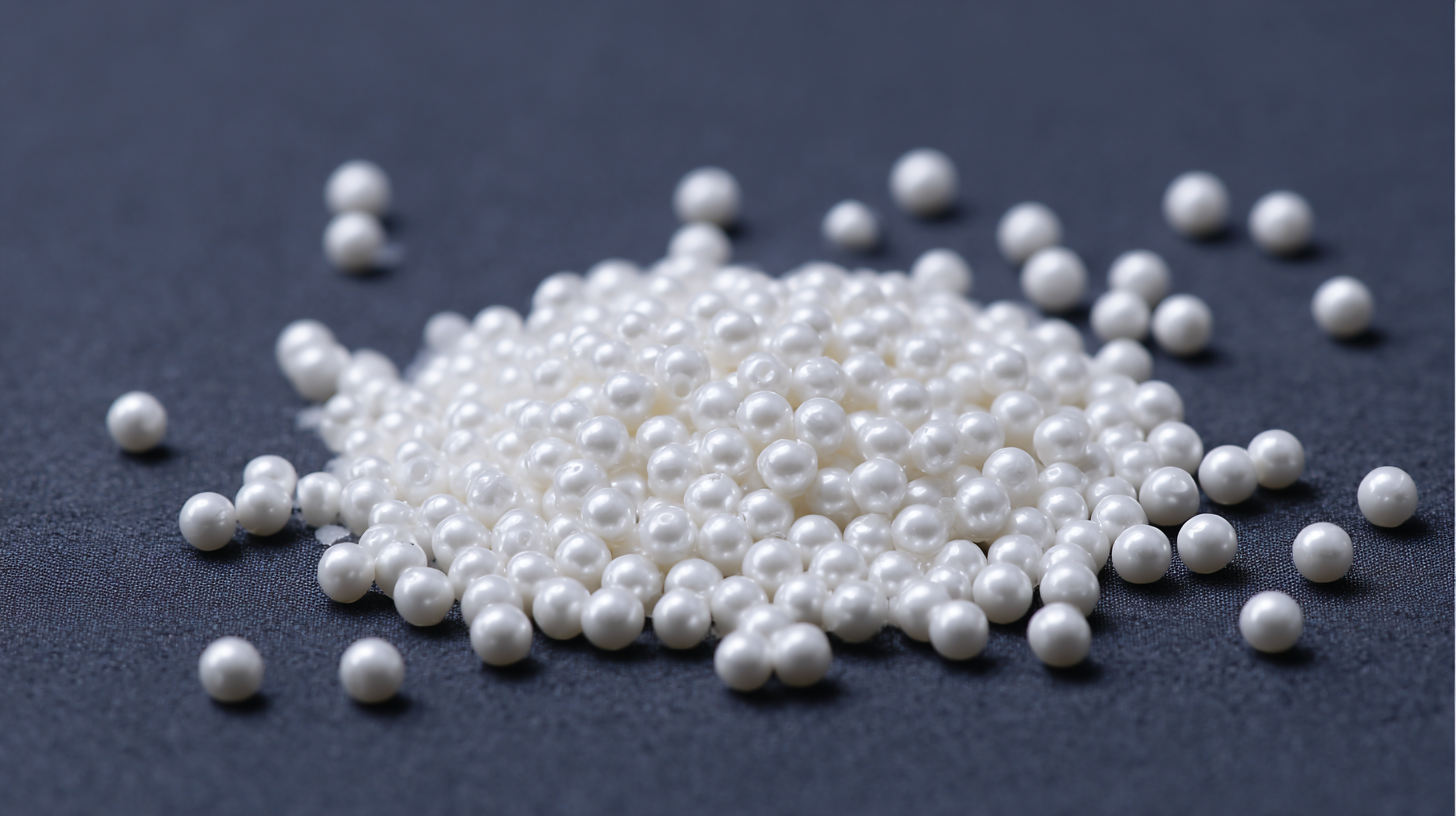 Zirconia Beads for Grinding Media have emerged as a crucial component in various milling and grinding applications due to their superior properties and performance. According to a recent market analysis report by ResearchAndMarkets, the global demand for advanced grinding media, particularly zirconia-based materials, is projected to grow significantly, with a compound annual growth rate (CAGR) of approximately 6.5% from 2021 to 2026. This growth is driven by the increasing need for efficient and effective grinding solutions in industries such as ceramics, pharmaceuticals, and paints.
Zirconia Beads for Grinding Media have emerged as a crucial component in various milling and grinding applications due to their superior properties and performance. According to a recent market analysis report by ResearchAndMarkets, the global demand for advanced grinding media, particularly zirconia-based materials, is projected to grow significantly, with a compound annual growth rate (CAGR) of approximately 6.5% from 2021 to 2026. This growth is driven by the increasing need for efficient and effective grinding solutions in industries such as ceramics, pharmaceuticals, and paints.
Zirconia beads offer exceptional hardness, toughness, and wear resistance, which not only enhances the milling process efficiency but also reduces contamination risk, ensuring that products maintain high purity levels. Therefore, understanding the advantages of Zirconia Beads for Grinding Media is essential for manufacturers looking to improve their processing capabilities and product quality in an increasingly competitive market.
Zirconia beads have gained prominence in the field of grinding media, owing to their unique characteristics that enhance performance in various applications. Made from zirconium oxide, these beads display exceptional hardness and wear resistance, making them ideal for high-energy milling processes. One of the key benefits of zirconia beads is their low porosity, which prevents the absorption of liquids during grinding, thus ensuring maximum efficiency and consistency in particle size reduction.
**Tips:** When selecting zirconia beads, consider the specific size and density that will best suit your milling requirements. A higher density bead can deliver superior grinding performance, especially in materials that are harder and require more energy to break down.
Another significant advantage of zirconia beads is their chemical inertness, which allows for the grinding of a variety of materials without contamination. This feature is particularly crucial in industries such as pharmaceuticals and food processing, where purity is paramount. Their spherical shape also contributes to a more uniform distribution of energy during milling, leading to better results in both quality and yield.
**Tips:** Regularly assess the condition of your zirconia beads after use, as worn beads can negatively affect performance. Implementing a maintenance routine for your milling equipment will help prolong the life of your grinding media and enhance overall productivity.
| Characteristic | Description | Benefits |
|---|---|---|
| High Density | Zirconia beads have a high density, which enhances the grinding efficiency. | Achieves finer particle sizes and accelerates processing time. |
| Wear Resistance | Zirconia materials offer exceptional resistance to wear and tear. | Longer lifespan reduces replacement costs and downtime. |
| Chemical Stability | Resistant to a wide range of chemicals, preventing contamination. | Maintains purity of the material being processed. |
| Low Noise | Produces minimal noise during grinding. | Creates a more pleasant working environment. |
| Versatility | Suitable for various applications including ink, paint, and pharmaceuticals. | Enhances productivity across different industries. |
When it comes to grinding processes, the choice of grinding media can significantly impact performance and efficiency. A comparative analysis of zirconia beads and traditional grinding media reveals several advantages of using zirconia. These beads are known for their superior toughness and wear resistance, which translates to longer service life and reduced replacement costs. Unlike traditional media, zirconia beads do not easily chip or break, leading to more consistent particle size distribution and better overall efficiency in various grinding applications.
**Tips:** When selecting grinding media, consider the specific material being processed and the desired particle size. Zirconia beads work exceptionally well for high-energy applications, while traditional media might be adequate for less demanding tasks. Additionally, always assess the compatibility of the grinding media with the mill and the specific material being ground.
Furthermore, zirconia beads have a lower density compared to some traditional media like steel, which can lead to reduced wear on grinding equipment. This lighter weight can result in lower energy consumption during the grinding process. Choosing zirconia over traditional grinding media not only enhances the performance but also creates a more environmentally friendly operation, reducing the carbon footprint associated with manufacturing and disposal.
**Tips:** Ensure to monitor the grinding conditions, as adjustments may be necessary when switching to zirconia beads due to their unique properties. Proper maintenance of the grinding equipment is also essential to maximize the benefits of using zirconia media.
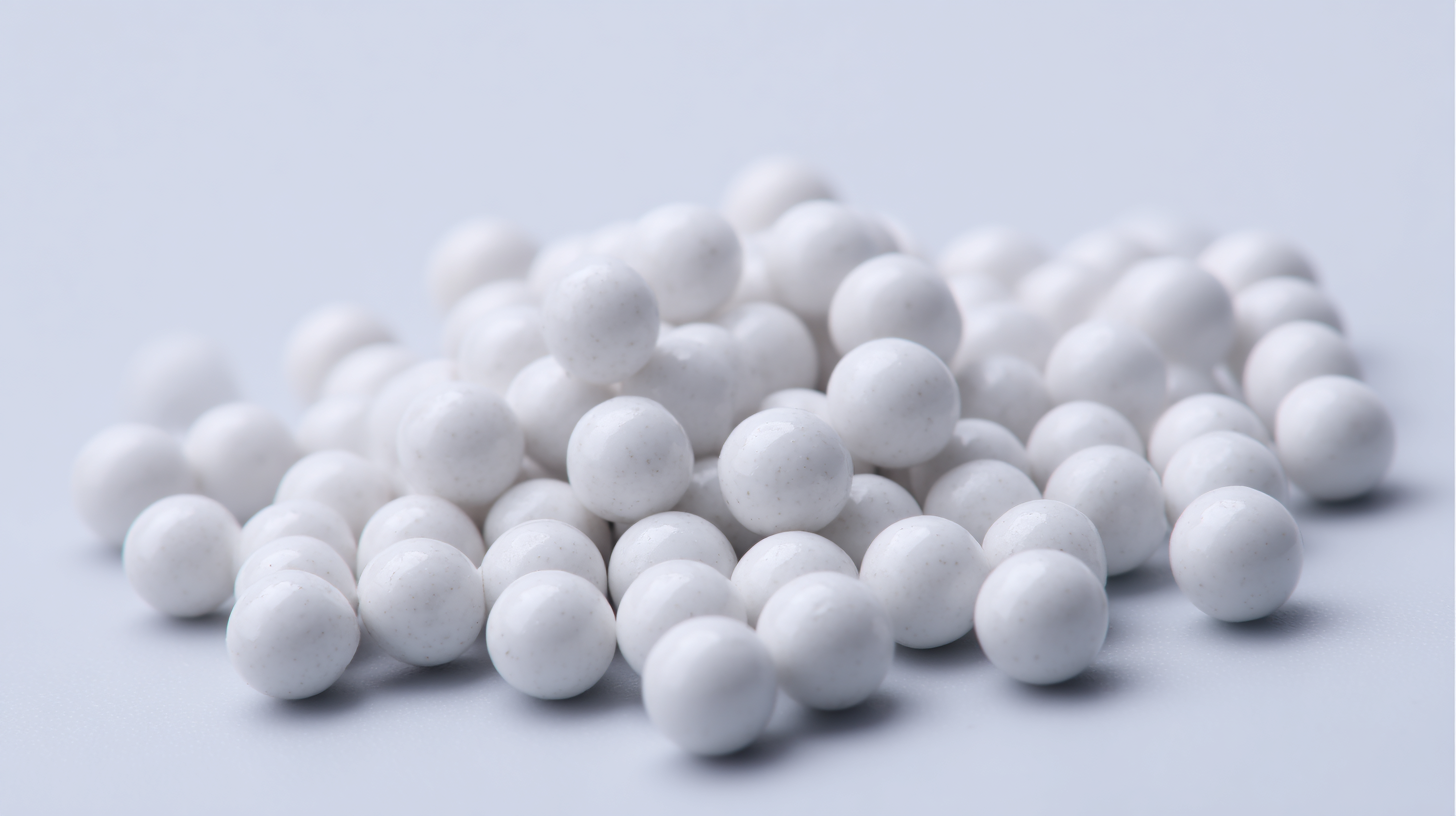
Zirconia beads have increasingly gained recognition in the field of grinding media due to their unique properties that optimize grinding efficiency. According to a report by the Abrasive Engineering Society, zirconia beads can enhance grinding performance by providing superior wear resistance and a longer operational lifespan compared to traditional grinding media, such as glass or steel beads. With a density of approximately 6.0 g/cm³ and a hardness rating of around 1200 HV, zirconia beads significantly improve the milling process, allowing for finer particle distribution and reduced energy consumption.
The unique toughness of zirconia beads plays a vital role in minimizing breakage during high-energy milling operations. Research published in the Journal of Powder Technology indicates that when used in high-performance applications, these beads achieve a grinding efficiency increase of up to 30%, demonstrating their ability to maintain structural integrity at high-impact conditions. This advanced performance not only optimizes the grinding process but also contributes to lower production costs and reduced downtime, making zirconia beads a preferred choice in industries such as ceramics, pharmaceuticals, and advanced materials.
Zirconia beads have emerged as a popular choice for grinding media in various industrial applications due to their exceptional durability and effectiveness. One of the most significant advantages of using zirconia beads is their cost-effectiveness. While the initial investment may be higher compared to other materials, the long-term savings and performance enhancements often outweigh these costs. Zirconia beads have a lower wear rate, which means less frequent replacement and reduced downtime, ultimately leading to increased productivity and lower operational costs.
Tip: When selecting zirconia beads for your grinding processes, consider the specific material characteristics and desired outcomes. Fine-tuning bead size and density can enhance the efficiency and quality of your grinding operations.
Moreover, the excellent mechanical properties of zirconia beads contribute to their cost-effectiveness. They exhibit high resistance to impact and abrasion, allowing them to maintain their shape and integrity over extended periods of use. This durability not only extends the lifespan of the grinding media but also improves the overall efficiency of the grinding process, leading to finer particle sizes and better dispersion in various applications.
Tip: Monitor your grinding conditions, such as temperature and humidity, to maximize the performance of zirconia beads. Proper maintenance and optimization can help you achieve the best results while minimizing costs.
When selecting zirconia beads for specific grinding applications, it’s essential to consider several key factors to ensure optimal performance. The hardness of zirconia beads, typically rated between 1200 and 1400 HV (Vickers Hardness), significantly influences their grinding efficiency and lifespan. This high hardness allows them to maintain their shape and structural integrity, even under intense milling conditions, which is crucial for industries that require precise particle size distribution, such as pharmaceuticals and advanced ceramics.
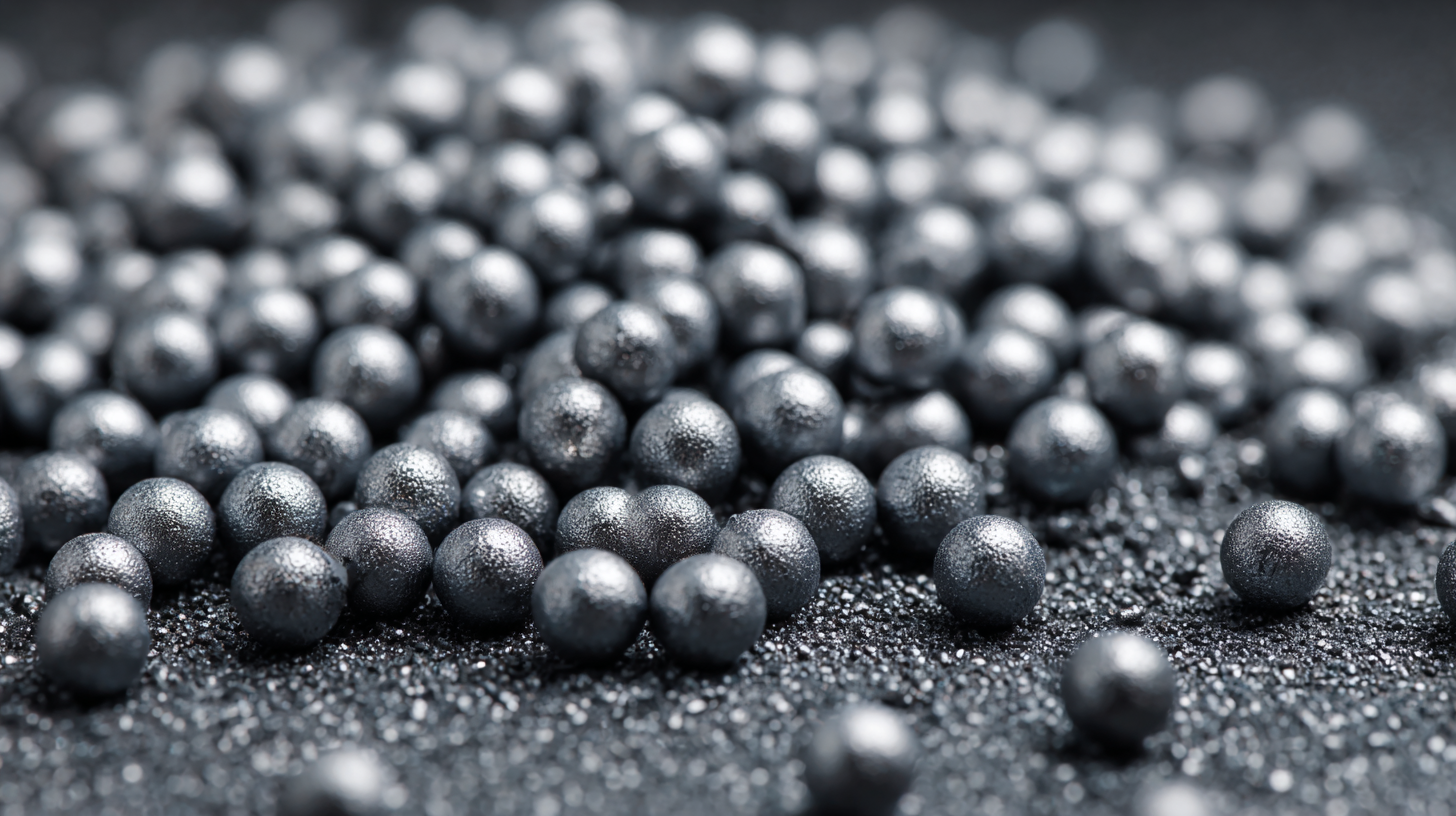 Another consideration is the bead size, which should be matched to the material being processed. According to a report from the International Journal of Advanced Manufacturing Technology, using beads that are too large can lead to excessive wear and result in a less homogeneous grind. The ideal bead size typically ranges from 0.1 mm to 2.0 mm, depending on the desired fineness of the final product. Moreover, the density of the zirconia beads, which can exceed 6.0 g/cm³, contributes to a more effective transfer of energy during milling, enhancing the overall grinding process and reducing the time required to achieve the desired particle size.
Another consideration is the bead size, which should be matched to the material being processed. According to a report from the International Journal of Advanced Manufacturing Technology, using beads that are too large can lead to excessive wear and result in a less homogeneous grind. The ideal bead size typically ranges from 0.1 mm to 2.0 mm, depending on the desired fineness of the final product. Moreover, the density of the zirconia beads, which can exceed 6.0 g/cm³, contributes to a more effective transfer of energy during milling, enhancing the overall grinding process and reducing the time required to achieve the desired particle size.
Lastly, it’s important to evaluate the coating and surface treatment of zirconia beads. Certain surface modifications can reduce wear and prevent contamination, making them suitable for sensitive applications where purity is paramount. By taking into account these crucial factors, manufacturers can select the right zirconia beads that align with their specific grinding needs, ultimately improving efficiency and product quality.
